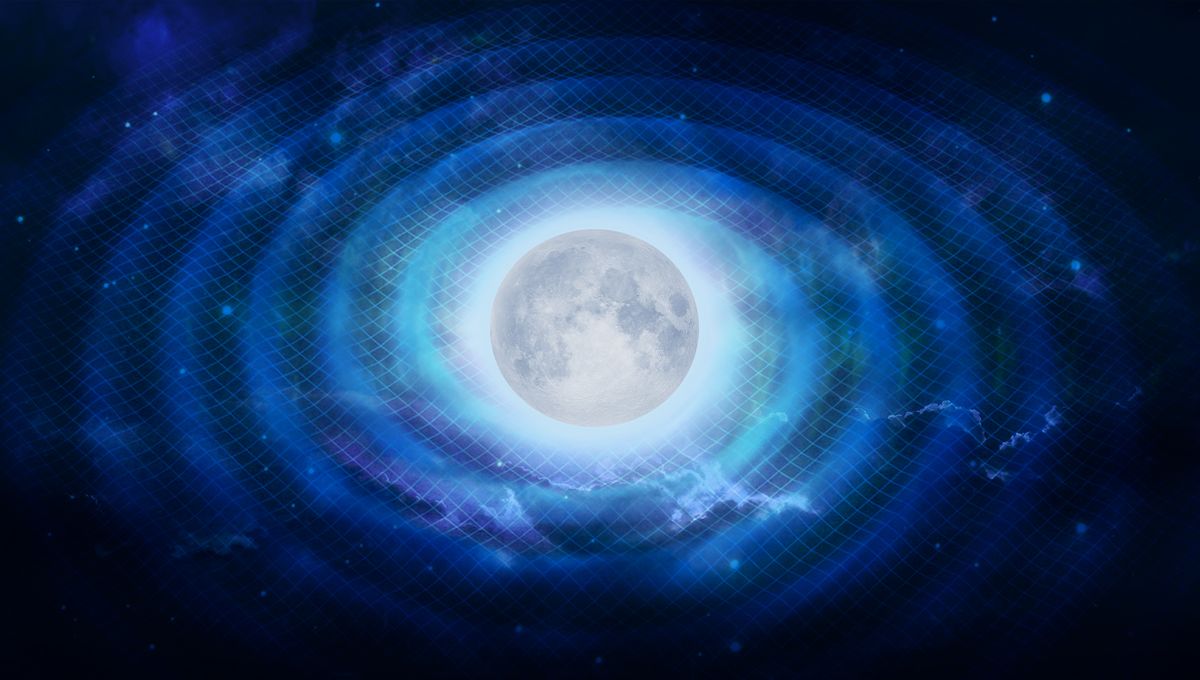
Gravitational wave detectors on Earth have already revolutionized astronomy and in the next decade, we will have LISA, the first gravitational observatory in deep space. But there is scope to build a detector in between these two types, both in terms of location and frequencies. This can be done by building it on the Moon.
The idea for a lunar gravitational wave detector was first proposed during the Apollo program. Now, in a new paper, scientists explore three options for building gravitational wave observatories on the Moon, including turning the Moon itself into a detector. As they note, there are plenty of challenges and the technology is not quite there yet but the potential is enormous – as would be the antenna itself.
Gravitational wave detectors can measure the tiny distortions of space-time by gravitational waves caused when massive objects move and merge. One of the proposals, from senior author Jan Harms of the Gran Sasso Science Institute, is the Lunar Gravitational Wave Antenna, which aims to use the deformation of the Moon as a gravitational wave passed through it using highly sensitive seismometers.
“The gravitational wave would come… from very far away, like the early universe. [I]t would come to the Moon and it would cause it to vibrate like a bell,” Harms told IFLScience. “Then essentially you can put sensors on the surface of the Moon to measure its deformations or vibrations.”
Another proposal suggests using mirrors and lasers rather than seismometers to measure the smallest deformations, while the third doesn’t focus on the Moon as the detector but as an ideal location to build a detector just like the Ligo and Virgo detectors we have on Earth.
The laser interferometers LIGO and Virgo use are big L-shaped vacuum tubes through which a laser beam is sent. It should take the light the same amount of time to travel down both tubes. However, if a gravitational wave is passing through, one will be shorter by an amount less than an atom, enough for the detector to confirm the event.
To reach such delicate precision, the mirrors that reflect the lasers are attached to devices called super attenuators that can reduce the shaking of the planet by a trillion times. The Moon may have moonquakes, but it’s the most seismically quiet place in the Solar system, so the precision would be even higher.
To maximize the sensitivity of these devices, they also have to be cooled to extreme temperatures. The Moon has some incredibly cold regions, like the bottom of craters at the poles where sunlight never reaches. However, this is also one of the challenges identified in the research: if placed in craters that are always in darkness, how to power a detector? Moon missions are usually powered by solar panels and we saw what happened when that goes wrong with Japan’s SLIM lunar lander earlier this year.
Controlling the experiment at a distance will also be an issue unless we are planning many permanent lunar bases. There are also challenges in creating seismometers, laser systems, and high-quality mechanics that would work to the high precision necessary. So, these detectors are not ready now but the team is confident that the challenges can be overcome. It might not be a quick turnaround but it is certainly possible, and there is a very compelling scientific case to do so.
“This effort to realize detectors is really closing the gap between what we want to do on Earth and what we can do in space. This is going to open an immense science case that we cannot have in any other way,” Harms told IFLScience.
Gravitational wave detectors on the Moon would detect gravitational waves in the deciHertz range instead of the 1 to 100s Hertz range Earth-based ones do. These waves are those produced by the mergers of binary neutron stars months or even years before colliding. It could also help us find more precise locations of massive black hole binaries. Also, given that lunar gravitational wave detectors would be long-lived and not start-and-stop experiments, they could provide wider searchers for gravitational wave events and help test general relativity even more.
The study is published in the journal Philosophical Transactions Of The Royal Society A.
Source Link: How We Could Turn The Whole Moon Into A Gravitational Wave Detector